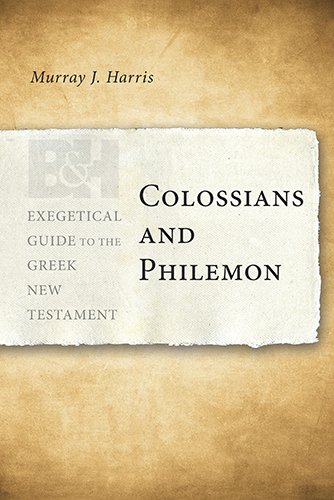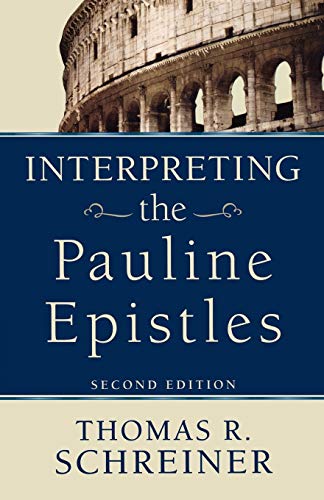Faith and Obedience in Romans: A Study in Romans 1–4 (JSNTSS 39)
Written by Glenn N. Davies Reviewed By Peter M. HeadIn this book (a revision of sections of a 1987 Sheffield PhD) the author attempts to ‘explore further [than others have done] the relationship between justification and God’s purposes for Jews and Gentiles’ (p. 18). He does this by means of a commentary-like approach to Romans 1–4, with an appendix on Romans 9:30–10:13. The two particular concerns which are primary are: firstly, the nature of the continuity in God’s method of saving mankind before and after the coming of Christ; and secondly, the nature of the relationship between faith and obedience in Romans.
A very brief introduction alerts the reader to the context: a post-Sanderian view of Judaism; and a post-Stendahlian view of Paul’s interest in the relationship between Jews and Gentiles. Five chapters contain the exegetical material of Romans 1–4, and a brief conclusion is offered. The brevity of both introduction and conclusion means that issues such as the history of research on this particular topic, the consequences for Pauline studies of the conclusions, etc., are not dealt with adequately. A glance at the index reveals that the authors most quoted are Barrett, Bruce, Cranfield, Käsemann, Murray, Sanday & Headlam, and Sanders (Kuss, Michel and Wilckens are referred to less often). This supports the impression that it is the inter-commentary debate which shapes this study. Little attention is given to the situation in Rome which Paul addresses (cf. Wedderburn, The Reasons for Romans), and to the way in which the Roman Christians may have read the epistle. Only occasional attempts are made to integrate the investigation of first-century Jewish literature into the argument of the thesis (e.g. on Abraham, pp. 155ff.).
What this book does contain is extended exegetical treatments of portions of Romans 1–4, with less detailed treatments of other portions. It consists of five chapters of varying lengths. The treatment is obviously, therefore, selective in terms of the amount of space given to various topics. The introduction and conclusion provide only the barest idea of the overall argument (and the inexperienced reader will be unaware exactly where, when and why Davies’ thesis differs from other interpretations of Romans). Readers would be well advised to begin with Davies’ summary of the argument of Romans 1:1–3:26 (on pp. 113ff.), as this provides access to many of the distinctive arguments of this thesis.
The basic argument is that (for Paul) God deals with mankind in the same way before and after the coming of Christ. Both Jews under the law, and Gentiles outside the law, were saved by faith and obedience. The coming of Christ, I and his sacrificial death, is the fulfilment of God’s purposes, the revelation of the means by which God could justly forgive those whom he promised to save under the old dispensation. Although in the era of fulfilment faith in God can only be expressed through Christ, and obedience to the law is modified by the fact that Christ is the goal of the law, yet ‘obedience is as integral to the Christian life as it was to the life of the faithful Jew in the Old Testament, an obedience which springs from faith and is guided by faith’ (pp. 174f.).
Along the way, Davies defends the following interpretations: hupakoen pisteos in 1:5 refers to ‘the obedience that springs from faith’; Paul accepts that Habakkuk 2:4 in Romans 1:7 means: ‘the emphasis is on “shall live by faith” ’. He follows Bassler in asserting the centrality of God’s impartiality as uniting 1:16–2:11; he argues that OT believers are primarily in view in 2:6–11; and that 2:14–16 refers to pre-Christian Gentile believers (righteous Gentiles). He argues that the OT citations in 3:10–19 all presuppose the distinction between righteous and wicked, which Paul accepts (cf. Dunn who argues that Paul exploits this ironically); it is the wicked among whom there are none righteous, no not one: ‘Paul’s condemnation is directed towards the wicked, in contrast to the righteous’ (p. 99). He argues (against Sanders et al.) that ‘works of the Law’ in Romans cannot be limited to those parts of the Torah that distinguish Jew from Gentile (‘Romans 9:30ff. and 11:6, therefore, provide significant obstacles to the acceptance of Sanders’ reconstruction of Pauline theology’, p. 126). ‘Glorying’ is not excluded on principle (3:27), but only glorying that is not accompanied by obedience (pp. 134f.) and faith (p. 154); this provides a significant link to chapter 4 on Abraham: Abraham was not justified by obedience but by faith.
Any adequate response would need equal time and space. In fact the commentary-like approach can hide (at times) the force of the thesis, which is considerable. The book cries out for a theological addendum making crystal clear the conclusions to be drawn from Paul (since Paul has been treated in a basically systematic manner this would not have been out of place). The announcement of another monograph on the same subject (D.B. Garlington, ‘The Obedience of Faith’: A Pauline Phrase in Historical Context (WUNT 2.38; Tübingen: Mohr, 1990–91), incidentally drawn from another British PhD completed in the same year, cf. WTJ 52 (1990) p. 201, n. 2) highlights the importance of the subject; but also provides the reviewer the opportunity to withdraw and await an interchange between the two.
Peter M. Head
Peter M. Head
Tyndale House
Cambridge, England, UK







